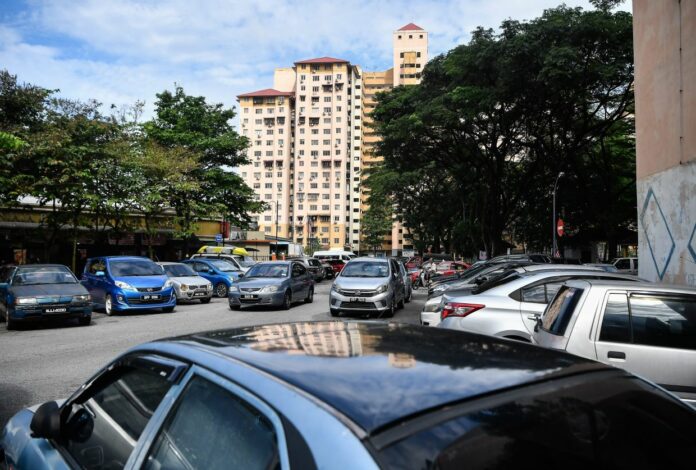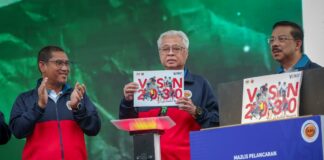KUALA LUMPUR, Nov 13 — A large number of private vehicles and the lack of parking spaces at People’s Housing Projects (PPRs), low and medium-cost stratified residential buildings in the capital city continue to cause distress to residents and members of the public.
Vehicles such as lorries, school buses, vans and cars parked haphazardly on the roadside and bus stops, hindering the movement of other vehicles passing the areas, are common in these neighbourhoods.
A Bernama check at several stratified residential buildings and PPRs in Sentul, Setapak and Bandar Seri Permaisuri found that residents are forced to park their vehicles on the main roads outside the housing areas, narrowing the two-lane roadway. Some vehicles are also abandoned, left to rot by their owners, exacerbating the situation.
A trader at the Bandar Permaisuri Hawker Centre, Zolkhoari Abdul Aziz said residents living nearby would also park their vehicles in the car park designated for their customers due to lack of parking spaces inside their housing compound.
He said some have even claimed the lots as their own, sometimes leaving their vehicles parked there for weeks.
“The car park lots for customers of this hawker centre amount to 64 lots but if I may say so, the nearby residents took over nearly all of them despite warning signs from the Kuala Lumpur Mayor indicating that only customers can park here.
“This situation creates uneasiness among the customers who want to enjoy the food here. Some would leave when they could not find an empty spot after waiting for a long time. This has affected the presence of customers and the sales of the hawkers here,” he said.
Meanwhile, a resident of the Kampung Baru Air Panas PPR, who wanted to be known only as Ezana, 34, said even though she is living with her parents and another sibling, it was necessary for them to each own a car as it is more cost-effective and convenient to go places.
Admitting that at times they have to park their cars quite a distance from their residential block, face the risk of vandalism to their vehicles and spend a long time looking for available parking spaces, the online trader considered these constraints as a common occurrence that those living in such areas have to deal with.
“A car is a necessity that facilitates my affairs because the nature of my job requires me to move around and meet clients,” she said, adding public transport such as buses and e-hailing services is limiting and does not adhere to a fixed schedule at times.
According to the senior lecturer of real estate studies at the Faculty of Architecture, Planning and Surveying of Universiti Teknologi MARA (UiTM) Prof Madya Dr Mona Isa, based on her observation, there are more than two generations of residents at PPRs or stratified residential buildings living together under one roof, contributing to the increase in vehicle ownership.
She said the original residents of the housing units have their adult children living with them who need to have a car to get around, adding in some instances, the children are married with children but forced to live with their parents as they cannot afford to buy a house.
“As commonly known, each unit of PPR or stratified residential buildings is typically allocated with one or two parking spaces. However, the scenario has changed as a unit may have more than two cars when there are several generations living together or if the unit is rented out.
“…a car is not a luxury but a necessity for them. Even if they cannot afford to buy a new and expensive car, they can still purchase a used car in good condition for the daily commute,” she said.
In light of this, Mona suggested Kuala Lumpur City Hall (DBKL) consider building multi-storey car parks, besides enhancing the efficiency of public transportation to reduce dependence on private vehicles.
















